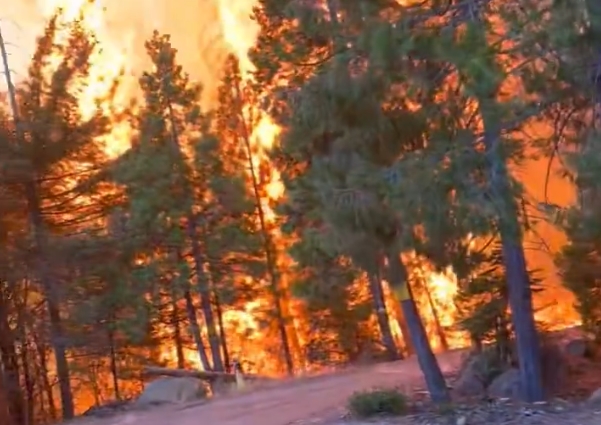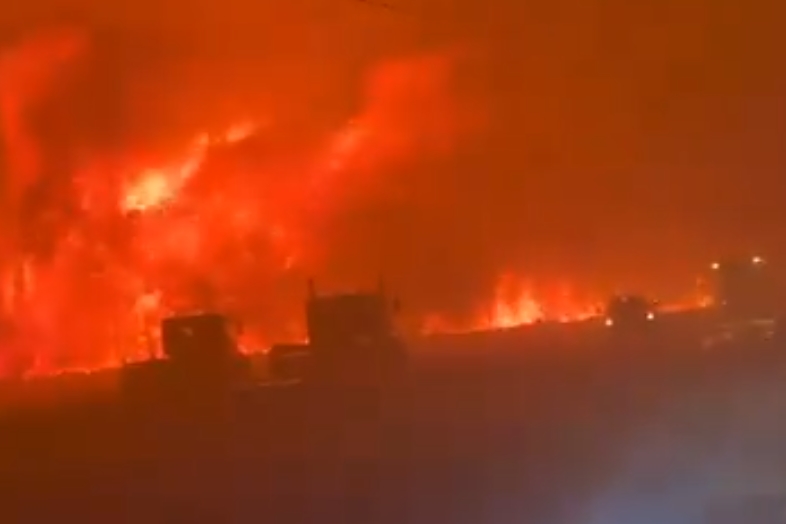
North California is dealing with a huge wildfire that is getting twice as big overnight. As of July 27 2024, over 178,000+ acres of land has been burned down making it one of the largest wildfires in recent history. The quick spread of the wildfire has caused thousands of residents to leave and evacuate the area leaving behind homes and communities that are under threat. The “Park Fire,” which started on July 24, 2024, has grown exponentially, fueled by high temperatures, dry atmosphere, and strong winds. As of the latest reports, only 10% of the fire has been contained, which is still a huge threat to multiple places including Butte, Plumas, Shasta, and Tehma. Emergency services, including over 4,000 firefighters, have been deployed to try and put out the wild fire however trying to contain the fire has been harder because of the terrain and the fire is very extreme.

CAL FIRE said that this year’s wildfire season has been worse because a very wet winter and spring created a lot of dry plants that can catch fire easily. “The vegetation is more susceptible to ignition and fire spread,” said a representative from CAL FIRE, showing the dire situation. These wildfires have deeply affected people. Thousands of residents have been evacuated, and many don’t know what will happen to their homes. One person from Tehama County, who lost his home, said, “We’ve lost everything. Our community is shattered.” Besides the danger to people and their homes, the environment is also suffering. The fires have destroyed wildlife habitats, and the heavy smoke is causing serious health problems. Air quality is very bad, with some areas reaching dangerous levels. Firefighters are working nonstop to control the fires and protect important buildings. But the size of the fires and the bad weather make it very hard.
Planes are dropping water and fire retardant, but the rough land makes it tough in some places. “We’re dealing with fires we’ve never seen before,” said a firefighter. “The fire is moving fast, and things are changing all the time. It’s a constant fight.” Governor Gavin Newsom has declared a state of emergency, sending more firefighters to help fight the fires. He made clear how important community support is by saying, “We are in this together, and we will rebuild together.” Local communities are helping people with shelters and relief centers. People are donating food, clothes, and other needs, and volunteers are working hard to help everyone in need. Experts say that climate change is making wildfires in California happen more often and makes them more fierce.
Higher temperatures, longer droughts, and changing rain patterns are creating perfect conditions for a big, destructive fire.To prevent this, people need to manage forests better, put more money into firefighters, and help prepare communities. “We need to adapt to this new reality,” said a climate scientist. “It’s not just about fighting fires; it’s about making our communities stronger.” As Northern California continues to fight these wildfires, the main focus is on saving lives and property. The road to recovery will be long and hard, but the strength and determination of the affected communities offer hope. One evacuee said, “We’ve been through tough times before, and we’ll get through this. Together, we’ll rebuild and come out stronger.” The personal stories of those affected are very moving.

Susan Martinez from Butte County tearfully shared her family’s escape: “We barely had time to grab our essentials before the flames were upon us. The speed and ferocity of the fire were terrifying.” The fires have also harmed local businesses and infrastructure. Small business owners, already struggling due to the economy, now face the challenge of rebuilding. Mark Thompson, owner of a small café in Plumas County, said, “We lost everything in hours. Rebuilding will take time, but our community is strong. We will support each other.” Neighbors are helping each other evacuate, share resources, and offer emotional support. Local schools have become shelters, and community centers are organizing food drives and donations. Advancements in technology are crucial in fighting wildfires. Drones with thermal imaging map the fire’s progress and find hotspots. Satellite data helps monitor and predict fire spread. Despite technology, the human element is essential. Firefighters from across the state and beyond have shown incredible bravery, working tirelessly to protect lives and property.
The wildfires have significant political and economic effects. It’s also very expensive as they would have to pay for the firefighters, rebuild buildings, and provide medical care. The State and federal governments need to spend a lot of money on recovery and prevention. Governor Newsom’s declaration of emergency and request for more help shows that a coordinated response is needed. The wildfires’ long-term environmental impact is severe. The destruction of forests and wildlife habitats affects biodiversity.
Losing trees means less carbon is absorbed, which makes climate change worse. Burned areas can experience soil erosion and water contamination, which harms water quality and aquatic life. It takes years, if not decades for ecosystems to recover. The current mess gives many important lessons for the future of wildfire management. We can improve forest management such as controlling burns and thinning vegetation and we can reduce large, uncontrollable fires. Investment in firefighting resources, including personnel and equipment, is crucial. Public education and community preparedness can reduce wildfire impact.
Residents need plans for evacuations, fire safety, and defensible spaces around their houses.Media and communication are crucial during crises. Accurate information keeps people informed and safe. Local news, social media, and government websites give updates, evacuation orders, and safety tips. However, false information can spread quickly, causing panic and confusion. Authorities need to fight misinformation with clear updates. Despite the devastation, stories of human spirit and resilience shine through. People are coming together, helping each other, and determined to rebuild. This shows the strength of those affected by the wildfires. Volunteers, charities, and regular people are donating supplies and offering shelter. This support will be vital in the coming weeks as communities rebuild. The wildfires in Northern California show the challenges of climate change and the need to be prepared and resilient. The focus is on saving lives, protecting property, and helping those affected. Recovery will be long and hard, but the strength of the communities gives hope. With better practices, more resources, and community support, California can become stronger. The priority now is to support firefighters, help evacuees, and start rebuilding. It’s crucial to learn from this crisis and take steps to lessen future wildfire impacts.

<Student Reporter Andrew Choi>andewchoi0724@gmail.com
Andrew Choi is a Sophomore student in Canyon Crest Academy






